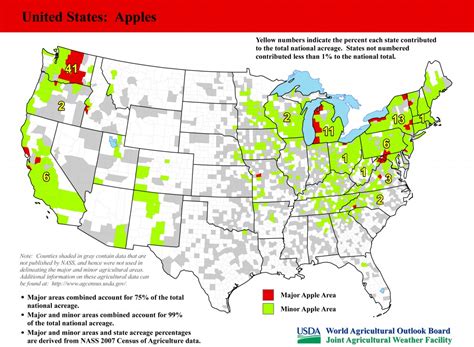Where Are Olives Grown In The United States

The United States is not typically known for its olive production, as the majority of the world's olives are grown in countries around the Mediterranean. However, there are several regions within the US where olives are grown, particularly in areas with a Mediterranean climate. California is the primary state for olive production in the US, with the majority of its olive farms located in the Sacramento Valley, Napa Valley, and Sonoma County. Other states with notable olive production include Arizona, Texas, Georgia, and Oregon.
Key Points
- California is the leading olive-producing state in the US, accounting for over 95% of the country's total olive production.
- The Sacramento Valley, Napa Valley, and Sonoma County are the primary regions for olive cultivation in California.
- Other states with significant olive production include Arizona, Texas, Georgia, and Oregon.
- The US olive industry is relatively small compared to global producers, with most domestic olives being used for oil production rather than table olives.
- Climate and soil conditions play a crucial role in determining the suitability of a region for olive cultivation, with mild winters and hot, dry summers being ideal.
Olive Farming in California

California’s olive industry has experienced significant growth over the past few decades, with many farms now producing high-quality olives for both domestic consumption and export. The state’s favorable climate, with mild winters and hot, dry summers, makes it an ideal location for olive cultivation. The Sacramento Valley, in particular, has become a hub for olive production, with its rich soil and ample water supply providing optimal conditions for olive trees. Napa Valley and Sonoma County, known for their wine production, are also home to numerous olive farms, with many wineries and vineyards incorporating olive groves into their operations.
Arizona and Texas Olive Production
While California dominates the US olive industry, other states are also making significant contributions. Arizona and Texas, for example, have seen an increase in olive production in recent years, with many farms taking advantage of the states’ warm and dry climates. The southern regions of these states, in particular, offer ideal conditions for olive cultivation, with the Phoenix area in Arizona and the Hill Country in Texas being notable hubs for olive production.
| State | Olive Production (Tons) |
|---|---|
| California | 35,000 |
| Arizona | 1,500 |
| Texas | 1,000 |
| Georgia | 500 |
| Oregon | 200 |

Challenges and Opportunities in US Olive Production

Despite the growth of the US olive industry, there are several challenges that farmers and producers must navigate. One of the primary concerns is the impact of climate change, which can lead to drought, heat stress, and other environmental factors that affect olive yields. Additionally, the US olive industry faces competition from established global producers, making it essential for domestic farmers to focus on producing high-quality, unique, and value-added products to differentiate themselves in the market.
However, there are also opportunities for innovation and growth in the US olive industry. For example, the development of new, disease-resistant olive varieties and the adoption of sustainable farming practices can help improve yields and reduce environmental impacts. Furthermore, the increasing demand for locally sourced and artisanal products presents an opportunity for US olive producers to capitalize on the "buy local" movement and establish strong relationships with consumers and chefs.
What are the primary factors affecting olive production in the US?
+The primary factors affecting olive production in the US include climate, soil quality, water availability, and pest management. Additionally, factors like market demand, competition from global producers, and regulatory policies can also impact the US olive industry.
Which olive varieties are most commonly grown in the US?
+The most commonly grown olive varieties in the US include ‘Arbequina’, ‘Frantoio’, ‘Koroneiki’, and ‘Picual’. These varieties are well-suited to the US climate and are often used for oil production.
What is the current market trend for US-produced olives?
+The current market trend for US-produced olives is focused on high-quality, artisanal, and locally sourced products. There is a growing demand for domestic olives, particularly among chefs, restaurants, and consumers who value unique and distinctive flavor profiles.



